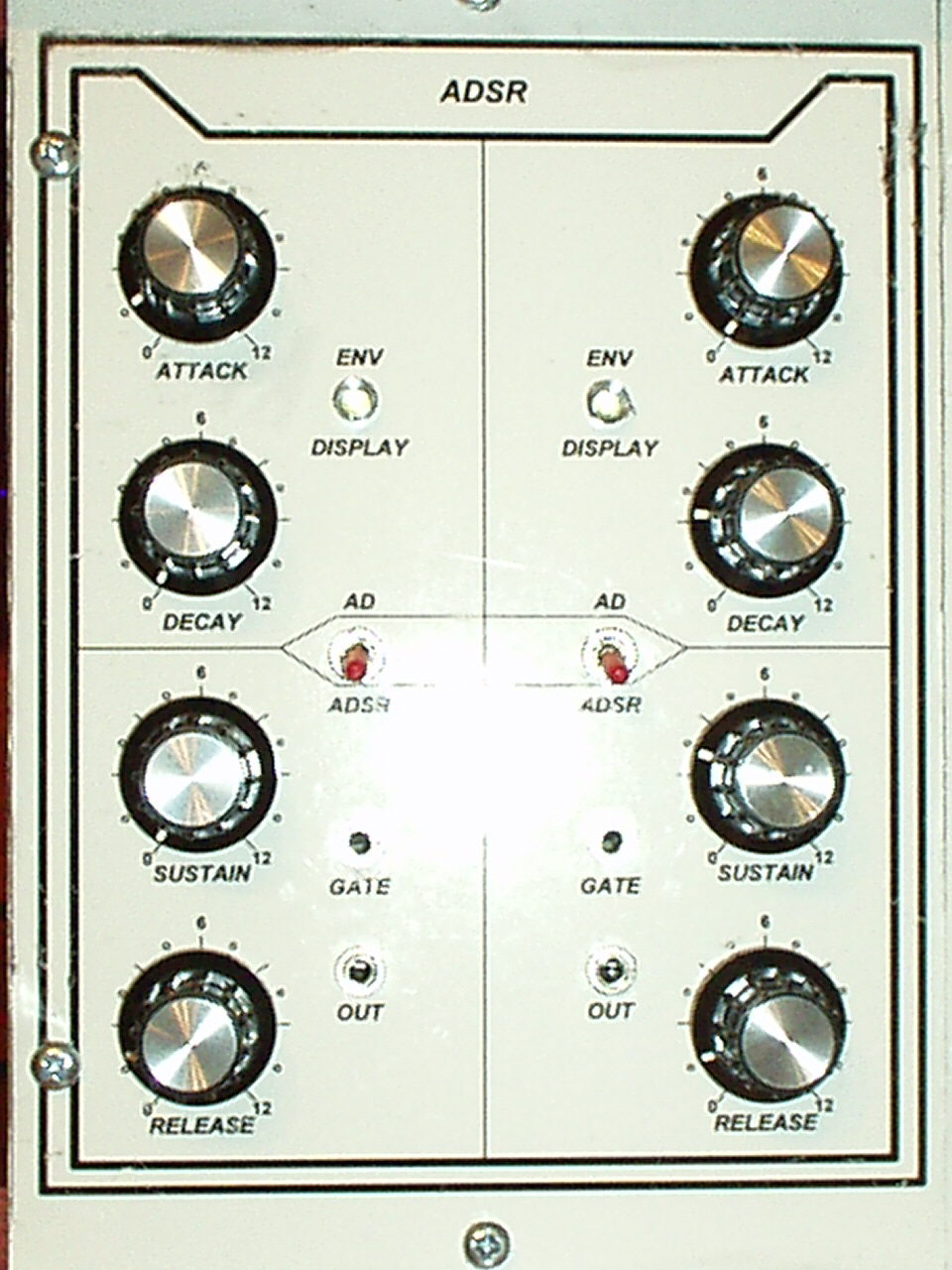
The envelope is started by a GATE signal, for instance by a key stroke. It contains four main parts which can be controlled by pots:
- Attack: Envelope increasing time
- Decay: Decreasing time until envelope reaches sustain level
- Sustain: Level on which the envelope stays the time a key is pressed (GATE signal is pending)
- Release: Time the envelope needs to fall down to zero after the key is released (GATE signal vanished)
Schematic:
The schema is part of the book "Formant Pro MSS 2000" by H.J. Helmstedt.
Sound example:
ADSR modulating the pulse width of the VCO square wave.
Reproduction hints:
As this circuit does not have too many components I rerouted the pcb layout and placed two ADSR modules on one Eurocard.
I was not able to make the monoflop work as demanded; instead of generating one pulse out of a GATE signal the monoflop circuit generated a square wave, probably caused by wrong resistor values in the schema. I made some experiments but had no success, so I replaced the monoflop circuit by a 4098 + 7805 power supply.
The next stage of the circuit was a flipflop, constructed with transistors and resistors like the original monoflop, and this circuit did not work too. Once again I experimented with resistors and was successful at least: I replaced R11 33k with 1k (!!!!), R14 100k with 6k8 (!!!!!) and R15 100k with 10k (!!!!!!). So with these little changes of resistor values the flipflop worked. I have not tried to check the MONOflop with these resistor values yet (I could not imagine to use such totally different resistor values while testing the monoflop), perhaps the monoflop would work as well, who knows?!?!?. Unimportant, I use the 4098 now.